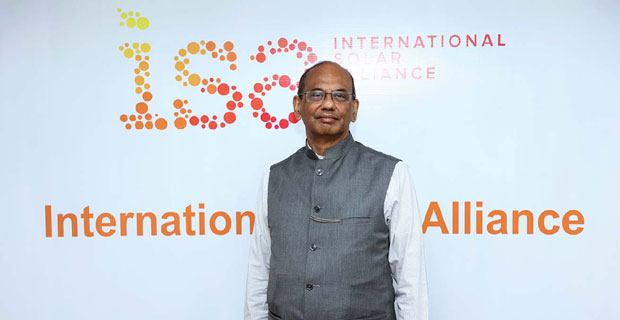“We look forward to all countries of the world being members of ISA”
Dr Ajay Mathur, Director General of the International Solar Alliance (ISA), speaks to India Empire Magazine’s Consulting Editor Yogesh Sood on the organization’s long-term goals, the Paris framework, the Green Climate Fund, clean and renewable energy, and a range of other topics
You have had a sterling career in the low-carbon and cleaner economy space and have helmed many organisations in these areas. As Director-General of the International Solar Alliance (ISA) today, what is your long-term vision for the world at large?
ISA’s goal is that solar becomes the energy of choice for leaders across the world. We at ISA support this goal through advocacy and analysis, capacity building and risk mitigation, and by setting up demo projects. These actions support the transition to solar and clean energy in all countries, including developing countries, and the Least Developing Countries (LDC) and the Small Island Developing States (SIDS).
You have been a leading climate-change negotiator and have donned the hat of India’s spokesperson at the Paris climate negotiations. How does the Paris framework work to deliver results in the ISA context?
The Paris framework provides the United Nations Convention on Climate Change country (UNFCCC) with a clear goal to move to a zero carbon economy in the next few decades. We see this happening through the use of solar electricity, and of hydrogen derived from solar electricity. Consequently, all of ISA’s efforts have the long term aim of enabling a transition to clean energy, while enabling local and domestic goals in the shorter term. So, for example, a short-term goal of reducing energy imports seeks to create domestic infrastructure for solar energy, which in the longer timeframe can be the building block for round-the-clock solar electricity.
The Green Climate Fund was established by 194 in order to limit and reduce greenhouse gas emissions, particularly in developing and vulnerable societies. You have served as the GCF’s Director during its foundational days. How far would you say it has the potential in limiting GHG emissions globally and in supporting the ISA’s activities?
We see the Green Climate Fund (GCF) as an essential part of the global financial architecture to enable the transition to clean energy by providing low cost loans, guarantees, and grants to developing countries. At ISA, we find that the investment in solar energy is badly skewed in favour of the developed countries. In 2019-2020, more than 70 percent of the global solar investment is in the developed countries and China, and only 5 percent is in the African LDCs and in the SIDS. At ISA, we are therefore in the process of creating a blended finance risk mitigation facility, and look forward to the GCF to provide the anchor capital for this facility.











Comments.